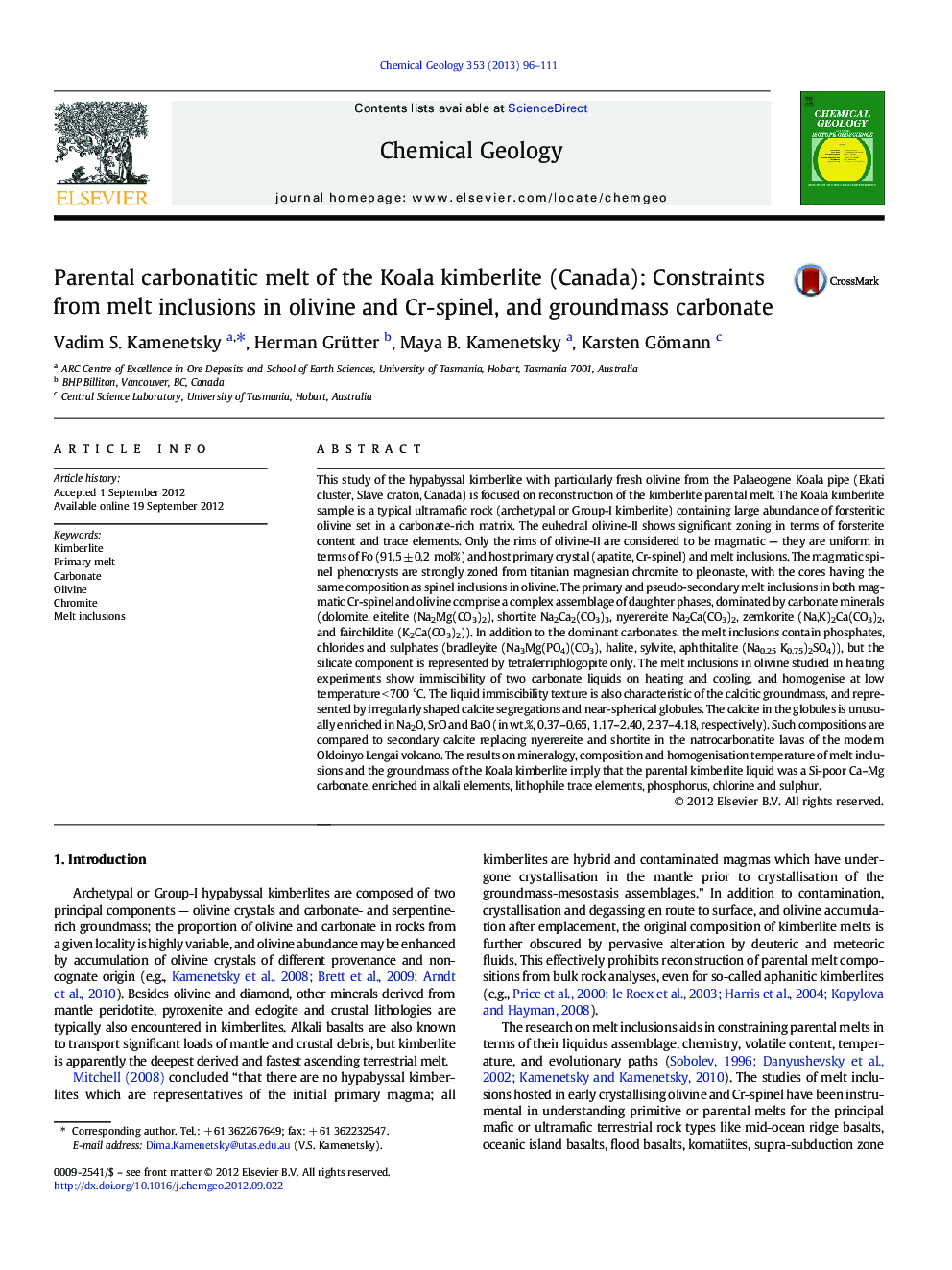| کد مقاله | کد نشریه | سال انتشار | مقاله انگلیسی | نسخه تمام متن |
|---|---|---|---|---|
| 4698933 | 1637616 | 2013 | 16 صفحه PDF | دانلود رایگان |
This study of the hypabyssal kimberlite with particularly fresh olivine from the Palaeogene Koala pipe (Ekati cluster, Slave craton, Canada) is focused on reconstruction of the kimberlite parental melt. The Koala kimberlite sample is a typical ultramafic rock (archetypal or Group-I kimberlite) containing large abundance of forsteritic olivine set in a carbonate-rich matrix. The euhedral olivine-II shows significant zoning in terms of forsterite content and trace elements. Only the rims of olivine-II are considered to be magmatic — they are uniform in terms of Fo (91.5 ± 0.2 mol%) and host primary crystal (apatite, Cr-spinel) and melt inclusions. The magmatic spinel phenocrysts are strongly zoned from titanian magnesian chromite to pleonaste, with the cores having the same composition as spinel inclusions in olivine. The primary and pseudo-secondary melt inclusions in both magmatic Cr-spinel and olivine comprise a complex assemblage of daughter phases, dominated by carbonate minerals (dolomite, eitelite (Na2Mg(CO3)2), shortite Na2Ca2(CO3)3, nyerereite Na2Ca(CO3)2, zemkorite (Na,K)2Ca(CO3)2, and fairchildite (K2Ca(CO3)2)). In addition to the dominant carbonates, the melt inclusions contain phosphates, chlorides and sulphates (bradleyite (Na3Mg(PO4)(CO3), halite, sylvite, aphthitalite (Na0.25 K0.75)2SO4)), but the silicate component is represented by tetraferriphlogopite only. The melt inclusions in olivine studied in heating experiments show immiscibility of two carbonate liquids on heating and cooling, and homogenise at low temperature < 700 °C. The liquid immiscibility texture is also characteristic of the calcitic groundmass, and represented by irregularly shaped calcite segregations and near-spherical globules. The calcite in the globules is unusually enriched in Na2O, SrO and BaO (in wt.%, 0.37–0.65, 1.17–2.40, 2.37–4.18, respectively). Such compositions are compared to secondary calcite replacing nyerereite and shortite in the natrocarbonatite lavas of the modern Oldoinyo Lengai volcano. The results on mineralogy, composition and homogenisation temperature of melt inclusions and the groundmass of the Koala kimberlite imply that the parental kimberlite liquid was a Si-poor Ca–Mg carbonate, enriched in alkali elements, lithophile trace elements, phosphorus, chlorine and sulphur.
► Reconstruction of kimberlite parental melt using fresh hypabyssal Koala kimberlite
► Liquidus assemblage is represented by olivine Fo 91.5 and Cr-spinel (Cr# 75–85).
► Ca–Mg carbonatitic melt inclusions are enriched in alkali elements, P, Cl and S.
► Melt inclusions show liquid immiscibility and homogenise at < 700 °C.
► Groundmass calcite enriched in Na, Sr and Ba shows liquid immiscibility texture.
Journal: Chemical Geology - Volume 353, 30 August 2013, Pages 96–111
